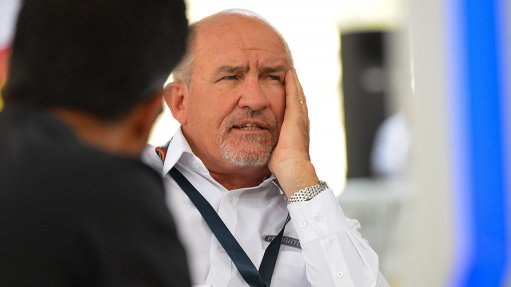
Daimler Trucks & Buses Southern Africa executive director Kobus van Zyl
Increased parts localisation within the truck assembly industry in South Africa will be difficult, largely because of the relatively low number of trucks sold in the country each year, says Daimler Trucks & Buses Southern Africa executive director Kobus van Zyl.
Van Zyl is also vice-chairperson of the Heavy Commercial Vehicle Committee within the National Association of Automobile Manufacturers of South Africa (Naamsa).
South African truck assemblers and the Department of Trade and Industry (DTI) have been locked in talks on the development of a new government support programme for the truck industry since 2013, when the Motor Industry Development Programme (MIDP) came to an end.
The MIDP has since been replaced with the Automotive Production and Development Programme (APDP), catering for passenger cars, bakkies and minibuses, with truck assemblers still operating under MIDP principles, until the proposed replacement Medium and Heavy Commercial Vehicle Automotive Investment Scheme (MHCV-AIS) can be finalised.
Under the MIDP, SKD truck and bus assembly operations receive the benefit of the duty-free importation of all driveline components, which include the engines, transmissions, drive-axles and gearboxes, for example.
The DTI’s MHCV-AIS continues government’s financial support for local assembly, but with government pushing for greater localisation, in order to stimulate job creation.
Van Zyl says the local truck industry has spent recent months investigating opportunities for increased parts localisation, under the guidance of consulting firm JFS Technologies.
“We have identified a number of opportunities, but, to be honest, we are disappointed with the huge challenges increased localisation will present to the industry.
“There are many truck manufacturers in South Africa selling many products in varying, small volumes, with few shared parts. The complexity is mind-boggling.”
The South African total new truck market averages between 25 000 units and 30 000 units a year.
Following the completion of the JFS Technologies study, the different vehicle manufacturers will now, on an individual basis, investigate possible localisation efforts with their parent companies.
“The DTI is still promoting cab-trimming localisation,” notes Van Zyl.
“However, we do not consider this to be the optimal localisation method.
“The answer in increasing the local content on locally assembled trucks, is to get our production volumes up so that we can get economies of scale. There are a number of ways to this.”
Van Zyl says the first option is for government’s procurement practices to reflect its strategy to localise more components on national truck assembly lines.
“It worked for the bus industry.”
The Preferential Procurement Policy Framework Act designates specific goods for local manufacture. Government tenders for these products should, therefore, allow only locally manufactured products, with a prescribed minimum threshold for local production and content.
These so-called designated products currently include bus bodies, but not trucks or truck bodies.
The second method of increasing volumes is to increase truck exports from South Africa, says Van Zyl.
“The economies in our neighbouring countries will pick up again.”
Van Zyl says it is also important for government to recognise what the industry has already achieved in terms of local content on truck bodies.
“If you look at the total truck unit we hand over to the customer, there is a lot of local content on the truck body. We are probably level with the local content on passenger cars built in South Africa.
“You can’t compare a chassis cab to a C-Class sedan, you must compare a complete truck unit to a C-Class. A tipper body makes up around 20% of the value of the truck. A compactor body even more.”
The Mercedes-Benz C-Class is built in East London.
When considering completed truck units, localisation opportunities that present themselves include parts such as trailer axles.
Van Zyl says Naamsa’s Heavy Commercial Vehicle Committee has presented its findings to the DTI.
“We are now waiting for them to get back to us. Naamsa and the DTI should have their next round of discussions before the end of the year.
“We believe that government and the industry are on the same page on the long-term objective of the development plan – to increase employment within the industry.
“We must just find a way to make this happen in a sustainable way, without adding costs to the customer and the economy.”